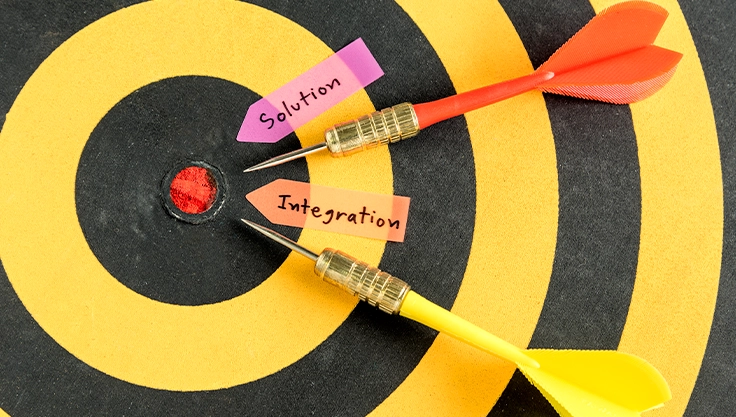“Learn the definition of target marketing and how Winback enhances your strategy for better efficiency and ROI.”
In the bustling world of marketing, businesses strive to connect with the right audience. One effective strategy that has proven to be invaluable is target marketing. Understanding and implementing target marketing can significantly enhance your business’s performance. This blog post will delve into the definition of target marketing, its importance, and how tools like Winback can optimize your marketing efforts.
What is Target Marketing?

Target marketing involves identifying and focusing your marketing efforts on a specific group of consumers who are most likely to buy your products or services. Rather than casting a wide net and hoping for the best, target marketing allows businesses to tailor their messages, products, and promotions to meet the unique needs and preferences of a particular audience.
The Importance of Target Marketing
- Efficiency: Target marketing ensures that your marketing efforts are directed toward a group of potential customers who are more likely to convert. This approach reduces waste and maximizes the return on investment (ROI).
- Relevance: By understanding the needs and preferences of your target audience, you can create more relevant and compelling marketing messages. This relevance increases the likelihood of engaging your audience and driving sales.
- Competitive Advantage: Businesses that successfully implement target marketing can gain a competitive edge by offering products and services that meet the specific needs of their audience. This differentiation can help you stand out in a crowded market.
- Customer Loyalty: Target marketing allows you to build stronger relationships with your customers. By consistently meeting their needs and exceeding their expectations, you can foster loyalty and encourage repeat business.
Key Elements of Target Marketing
- Market Segmentation: The first step in target marketing is segmenting your market. This involves dividing the broader market into smaller groups based on various criteria such as demographics, psychographics, behavior, and geography.
- Target Market Selection: Once you have segmented the market, the next step is to select the most attractive segments to target. This decision should be based on factors such as the segment’s size, growth potential, and alignment with your business objectives.
- Positioning: After selecting your target market, you need to position your product or service in a way that resonates with that audience. This involves creating a unique value proposition and developing a marketing mix that appeals to your target customers.
- Implementation: The final step is to implement your target marketing strategy. This involves executing your marketing plan, monitoring its performance, and making adjustments as needed to ensure success.
Winback: Enhancing Target Marketing Efforts

Winback (https://trywinback.com/) is a powerful tool that can help businesses optimize their target marketing efforts. Winback specializes in re-engaging lapsed customers through personalized email campaigns. Here’s how Winback can enhance your target marketing strategy:
- Data-Driven Insights: Winback uses advanced analytics to provide insights into customer behavior and preferences. This data can help you identify high-potential target segments and tailor your marketing messages accordingly.
- Personalization: Winback enables you to create personalized email campaigns that resonate with your audience. By addressing the specific needs and preferences of your target customers, you can increase engagement and drive conversions.
- Automation: With Winback, you can automate your email campaigns, saving time and resources. Automation ensures that your messages reach the right audience at the right time, maximizing the impact of your marketing efforts.
- Performance Tracking: Winback provides detailed reports on the performance of your email campaigns. These insights allow you to measure the effectiveness of your target marketing strategy and make data-driven adjustments to improve results.
Benefits of Using Winback for Target Marketing
- Reactivating Lapsed Customers: Winback focuses on re-engaging customers who have previously interacted with your brand but have since become inactive. By targeting this specific group, you can revive interest and drive repeat business.
- Cost-Effective Marketing: Acquiring new customers can be costly. Winback helps you make the most of your existing customer base by re-engaging lapsed customers, which can be more cost-effective than acquiring new ones.
- Increased ROI: By targeting customers who have already shown interest in your brand, Winback can help you achieve a higher ROI on your marketing efforts. These customers are more likely to convert, resulting in increased sales and revenue.
- Enhanced Customer Loyalty: Re-engaging lapsed customers through personalized campaigns can help rebuild relationships and enhance customer loyalty. Satisfied customers are more likely to make repeat purchases and recommend your brand to others.
Implementing Target Marketing with Winback
- Identify Lapsed Customers: Use Winback’s analytics to identify customers who have become inactive. These customers are your primary target for re-engagement campaigns.
- Segment Your Audience: Segment your lapsed customers based on factors such as purchase history, preferences, and behavior. This segmentation allows you to create personalized campaigns that resonate with each group.
- Create Personalized Campaigns: Use Winback to create personalized email campaigns that address the specific needs and preferences of your target segments. Personalization increases the likelihood of re-engagement and conversion.
- Automate Your Campaigns: Automate your email campaigns using Winback’s automation features. Automation ensures that your messages are delivered at the right time, maximizing their impact.
- Monitor and Adjust: Track the performance of your campaigns using Winback’s reporting tools. Use these insights to make data-driven adjustments and optimize your target marketing strategy.
Leveraging Target Marketing in SMS Marketing

SMS marketing offers a direct and personal way to reach your audience, making it an ideal channel for target marketing. By applying target marketing principles to your SMS campaigns, you can create highly relevant and engaging messages that drive conversions. Here’s how to take advantage of target marketing in SMS marketing:
-
Segment Your Audience:
Divide your customer base into smaller segments based on demographics, purchase history, behavior, and preferences. This segmentation allows you to tailor your SMS messages to each group, making them more relevant and impactful.
-
Personalize Your Messages:
Use the data you have on your target segments to personalize your SMS messages. Address customers by their names, reference their past purchases, and offer personalized recommendations. Personalized messages feel more relevant and are more likely to engage your audience.
-
Timing is Key:
Send your SMS messages at times when your target audience is most likely to engage. Analyze customer behavior to determine the optimal times for sending messages. This ensures that your messages are seen and increases the likelihood of a positive response.
-
Offer Exclusive Deals:
Reward your target segments with exclusive deals and promotions. These offers can be tailored to the interests and preferences of each segment, making them more enticing and driving higher conversion rates.
-
Use Clear and Concise Language:
SMS messages have a limited character count, so it’s essential to be clear and concise. Deliver your message in a straightforward manner, ensuring that it’s easy to understand and compelling enough to prompt action.
-
Include a Strong Call-to-Action (CTA):
Every SMS message should have a clear and compelling CTA. Whether it’s directing customers to your website, encouraging them to make a purchase, or inviting them to an event, a strong CTA guides your audience on what to do next.
-
Monitor and Optimize:
Track the performance of your SMS campaigns to understand what works and what doesn’t. Use this data to make informed adjustments to your strategy. Continuously optimize your campaigns based on customer feedback and engagement metrics to improve results.
Conclusion
Target marketing is a powerful strategy that allows businesses to focus their marketing efforts on specific segments of the market. By understanding and addressing the unique needs and preferences of their target audience, businesses can create more relevant and compelling marketing messages that drive engagement and sales. Tools like Winback can enhance target marketing efforts by providing data-driven insights, enabling personalization, automating campaigns, and tracking performance.
Incorporating target marketing into your overall marketing strategy can lead to greater efficiency, relevance, competitive advantage, and customer loyalty. By leveraging the power of Winback, businesses can optimize their target marketing efforts and achieve higher returns on their marketing investments.
For businesses looking to re-engage lapsed customers and enhance their target marketing strategy, Winback offers a valuable solution. By focusing on the specific needs and preferences of your target audience, you can create personalized campaigns that drive re-engagement and repeat business.
Start your target marketing journey today and unlock the potential for greater success with precision strategies.
FAQs about Target Marketing and Winback
Q: What is the main difference between mass marketing and target marketing?
A: Mass marketing involves promoting products to a broad audience without focusing on specific segments. Target marketing, on the other hand, involves identifying and focusing on specific groups of consumers who are most likely to buy your products.
Q: How can small businesses benefit from target marketing?
A: Small businesses can benefit from target marketing by maximizing their limited resources. By focusing on specific segments, small businesses can create more effective and efficient marketing campaigns that drive results.
Q: What role does customer data play in target marketing?
A: Customer data is crucial in target marketing. It provides insights into customer behavior, preferences, and needs, allowing businesses to create more relevant and personalized marketing messages.
Q: How can Winback help improve customer retention?
A: Winback helps improve customer retention by re-engaging lapsed customers through personalized email campaigns. These campaigns address the specific needs and preferences of the target audience, increasing the likelihood of re-engagement and repeat business.
Q: Is target marketing suitable for all types of businesses?
A: Yes, target marketing is suitable for businesses of all sizes and industries. By focusing on specific segments, businesses can create more effective marketing strategies that drive results.
Q: Can Winback be integrated with other marketing tools?
A: Yes, Winback can be integrated with other marketing tools to create a comprehensive marketing strategy. Integration allows businesses to leverage the strengths of multiple tools to achieve better results.
Q: How often should businesses review their target marketing strategy?
A: Businesses should regularly review their target marketing strategy to ensure it remains effective. Regular reviews allow businesses to make data-driven adjustments and optimize their marketing efforts.
 Reading time about
6min
Reading time about
6min
